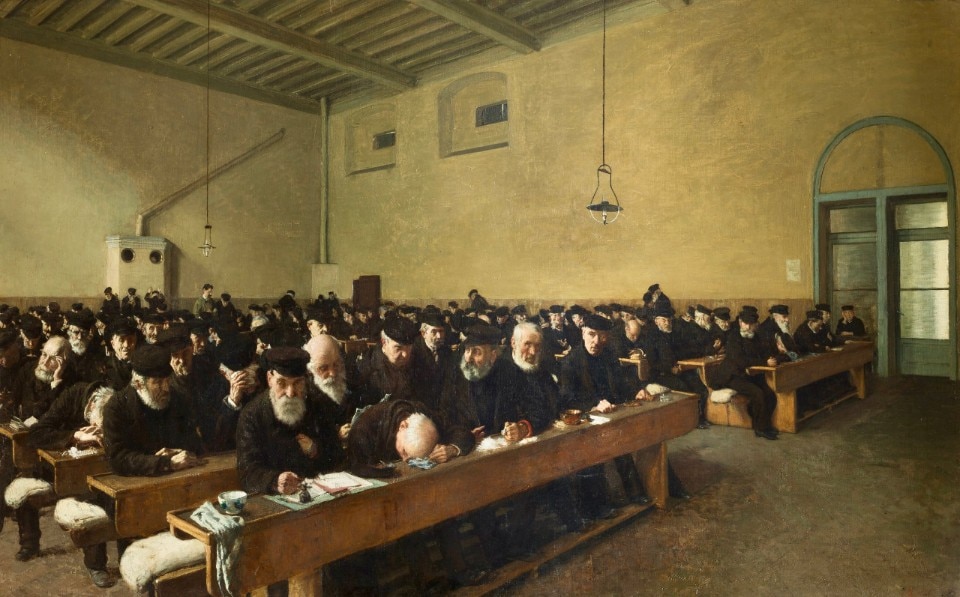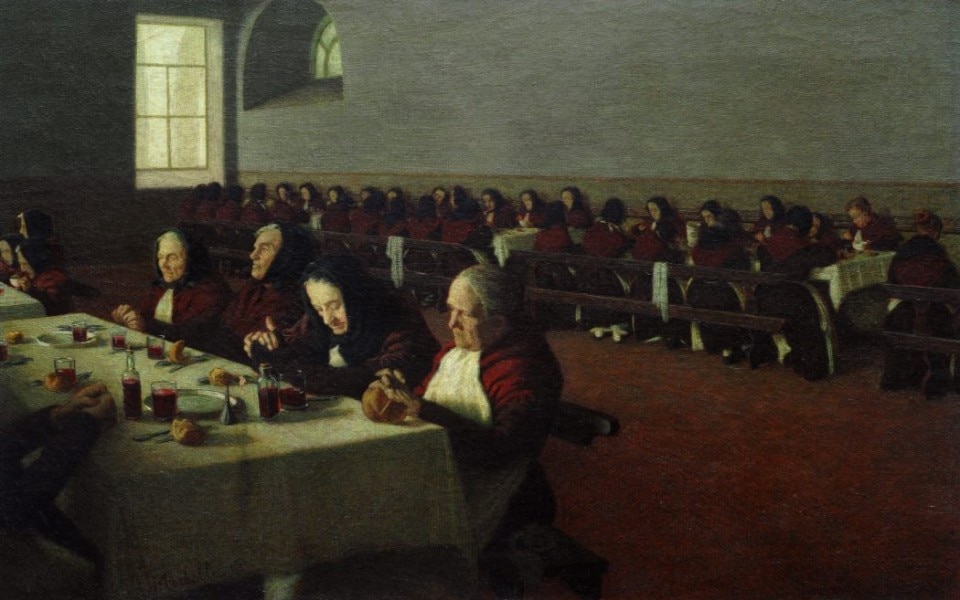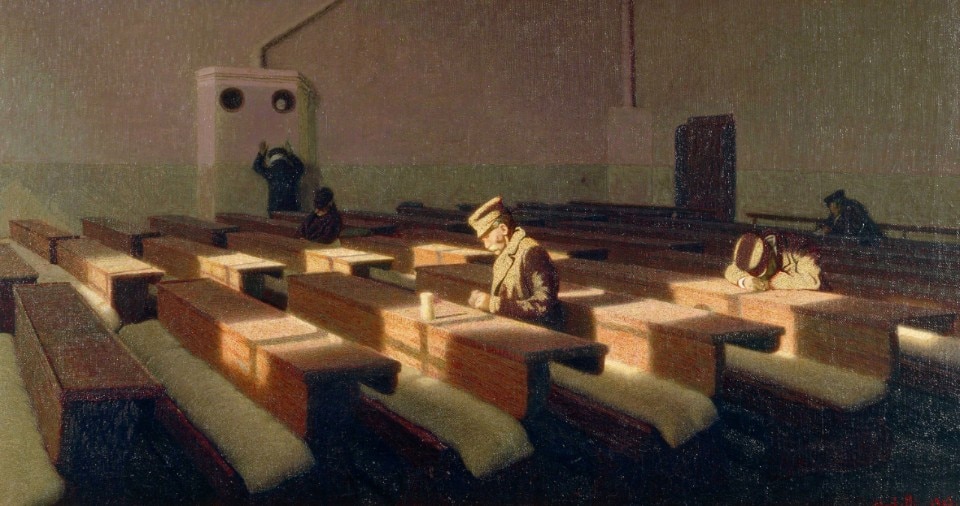Until now, it seemed that the valorization of the cultural heritage of a country could only happen thanks to a constant overlapping of material goods: objects, artifacts, tools, works of art, and immaterial goods: stories, traditions, beliefs, rituals, festivals, feelings, passions, emotions, thoughts.
And today? In this precise historical moment, this kind of interpretation can only be analyzed and perhaps revised. Italians have lost a generation; they have lost part of their cultural heritage.
At the time of the Coronavirus pandemic, the elderly in hospitals and nursing homes had neither time nor voice: dead bodies covered with white sheets, abandoned in their beds, far from all their loved ones.
The Pio Albergo Trivulzio. Milan.

At the end of the 19th century, Piedmontese-by-birth and Lombard-by-choice painter Angelo Morbelli began to address many social and political issues in his paintings, focusing on the human aspects of existence in the Pio Albergo Trivulzio retirement home, with works of art that were capable of challenging the entire society. Veritable portraits within the portraits: old people rejected from society because they were no longer considered useful, workers who had put themselves at the service of the emerging industrial society and who were marginalized when no longer needed, elderly people without economic means of support condemned to spend the last part of their lives with many other elderly people, in huge promiscuous environments, far from their loved ones. Giorni Ultimi (Last Days) is the painting that inaugurated his poetics of abandonment, desolation, suffering: a youthful work, which precedes Morbelli’s Divisionist phase. The artist captures the everyday life, he makes it his own and at the same time he makes it public, describing these figures as almost absent bodies, sitting on the long benches of the large place dedicated to minor everyday activities. Light, a fundamental element in Morbelli’s painting, brings out their dull and melancholic faces: some read, others look lost, others hold their heads in their hands, as if to tell us about their worries. There are those who try to write, those who sleep, those who look around completely disoriented, a narrative path that helps to reveal Morbelli’s attitude as an artist who investigates reality in order to emphasize the human condition of those who are suffering, rather than to denounce a concrete problem. His is almost a necessity to reciprocate those looks, to identify not so much a temporality that implies the narrative process, but rather a co-presence lying on the canvas as a condensation of a single semiotic-figurative and anthropological-cultural register.
Veritable portraits within the portraits: old people rejected from society because they were no longer considered useful, workers who had put themselves at the service of the emerging industrial society and who were marginalized when no longer needed, elderly people without economic means of support
The real theme, the one that Morbelli tries to evoke in his paintings, is anguish, exclusion from life, being abandoned by your own family and the estrangement from society. The guests of the Pio Hotel Trivulzio retirement home were forced, due to the lack of adequate space, to share the same rooms, to sleep in large dormitories, where it was not possible to separate the healthy from the sick. Absorbed in their thoughts, they consumed their modest meal among many other unhappy and unknown figures who could only live in their memories and the glances of those absent spectators. Their expressions made the content of the work easily understandable.

There is one painting, however, that could be considered a sort of concluding epilogue: Sogno e Realtà (Dream and Reality), also known as Trittico dell vita (Triptych), a 1905 painting that, not devoid of symbolisms, is narrated with a meditative painting technique imbued with sweetness and at the same time nostalgia. The triptych represents two elderly people, at both sides of the painting, sitting in an interior and illuminated only by flashes of light that highlight their faces. Both look asleep; before dozing off she was knitting and he was reading. At the centre, the part that makes this perhaps one of the most moving paintings of Italian painting history between the nineteenth and twentieth century, in a dreamlike dimension capable of reuniting the two lovers, we find two young people; she’s dreamily resting her head on his shoulder, while together they admire the starry sky.
The only element of continuity remains the railing, the pivot of the two different space-time dimensions.
The evocation of memory is evident: it makes old age more bearable, perhaps, a memory of a happy age that diverts thoughts from the bitterness of their present for a life that has now changed.
“There is still much to be collected in terms of feelings and painting”: this is what Morbelli wrote, in 1901, to his friend Pellizza da Volpedo, thus revealing, for the paintings of the Milanese retirement home, a reflection dictated perhaps more by human motives than political reasons, where the drama was the subject and the accent was placed precisely on the existential aspects that Morbelli addresses with intimate delicacy and lyrical elegance.
Opening image: Angelo Morbelli, Il Natale dei rimasti, 1903 Venezia, Galleria d’Arte Moderna


